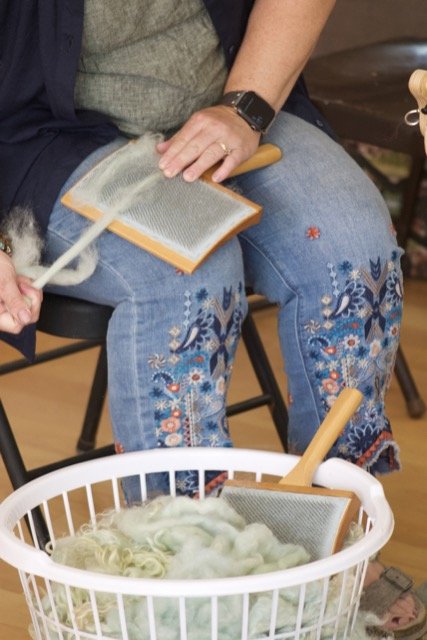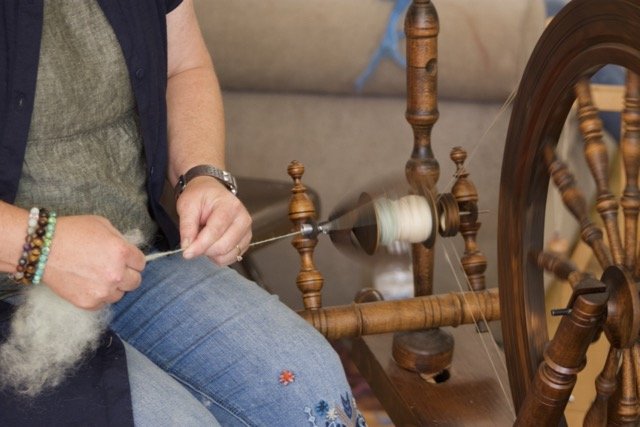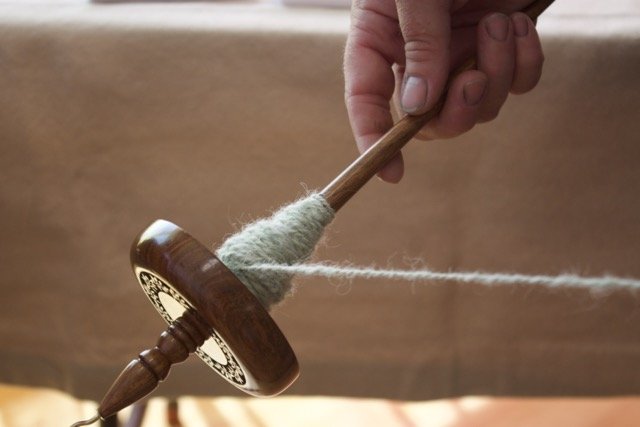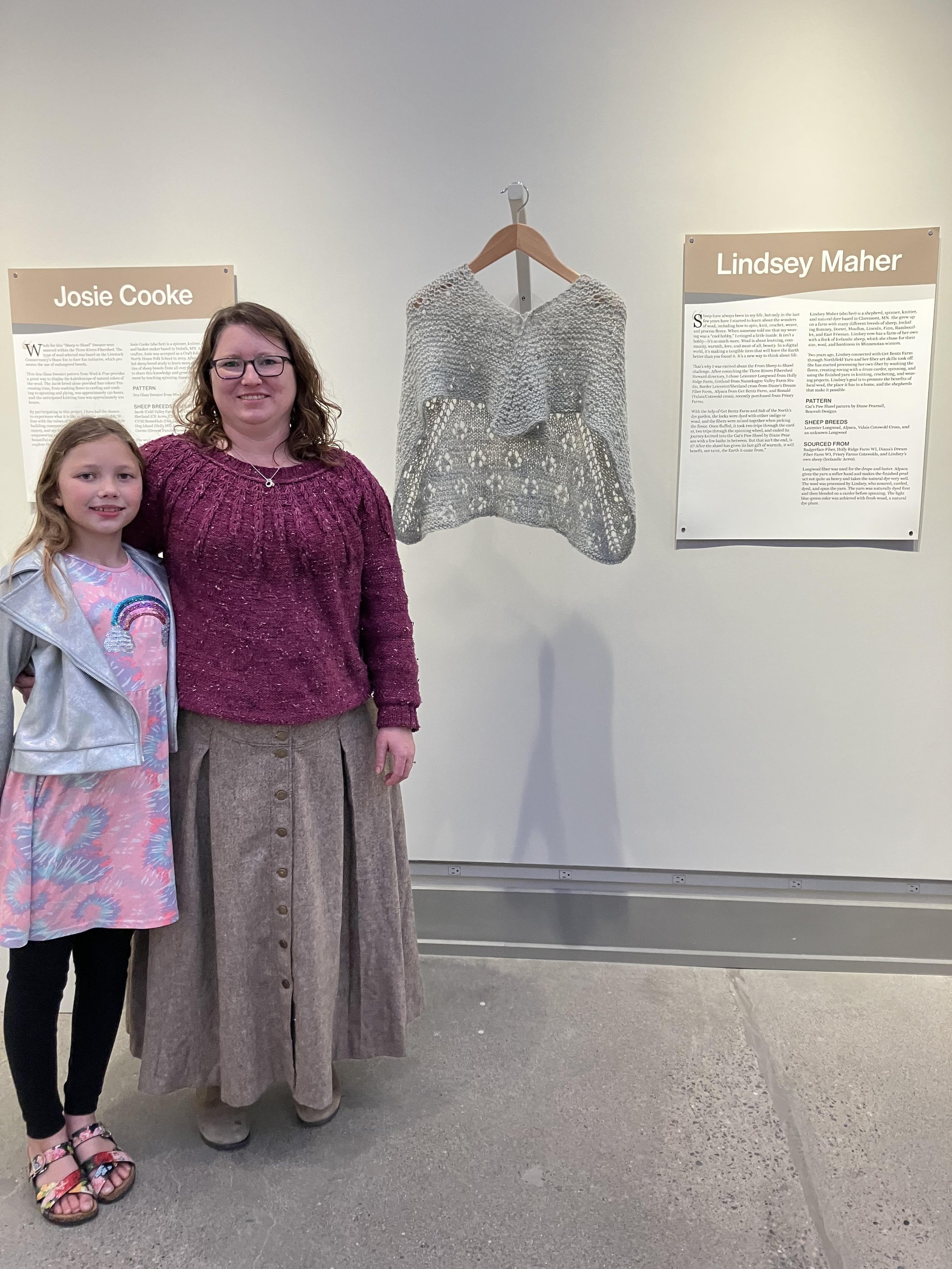Lindsey Maher
she/her
Spinning - Natural Dyeing - Knitting - Processing the Raw Fleece
Claremont, MN
Instagram: @Icelandicacres
Ravelry: Icelandicacres
From Sheep to Shawl Project
I will be making the Cat’s Paw Shawl pattern from raw fleeces sourced from the Fibershed. My plan is to scour wool from a few different breeds, dye them with natural dyes, sample different mix ratios of the breeds, and choose a final recipe for the shawl.
I attended the From Sheep to Shawl Introductory Event last month and learned about the breeds Diane used in her samples, and that a solid-colored yarn would be best to show off the pattern.
I grew up with many different breeds of sheep including Romney, Dorset, Mouflon, Lincoln, Finn, Rambouillet, and East Friesian as my dad bought them from a sheep station that was closing. Now, after working with wool, I had no idea what we had. When I went to college the sheep were sold, but I couldn’t live without them too long. After college, we ended up on 10 acres and I had my flock of 5 Icelandics. I chose Icelandics for their size, wool, and hardiness in MN winters.
Throughout the years I kept thinking I should do something with their wool. It wasn’t until 2 years ago when I found Get Bentz Farm through Northfield Yarn that my fiber arts skills really took off. Since then, I have started washing fleece, processing it with a drum carder, spinning it, and using it in knitting, crochet, and weaving projects.
Multiple people have helped me along the way, and I want to give back to the community by sharing my TRF Maker From Sheep to Shawl journey. Inspiring others to develop new skills as we all start from the beginning. Plus, there is the wool. A great useful, sustainable fiber that is flame resistant, insulates when wet, has antibacterial and antimicrobial properties, is quick to dry, and some breeds are resistant to felting. It's amazing how fleeces differ between fine, medium, and long wools, even fleeces within a breed can be drastically different.
My goal is to promote the benefits of local wool, the place it has in your home, and the shepherds that make it possible. I’m excited to be part of this community that lifts up every maker and is promoting sustainable wool to the marketplace.
the project
the fiber
Sheep Breeds - Leicester Longwool, Alpaca, Valais Cotswold Cross, and an unknown longwool
Sourced From - Badgerface Fiber, Holly Ridge Farm WI, Diana’s Dream Fiber Farm WI, Priory Farms Cotswolds, and Lindsey’s own Sheep (Icelandic Acres)
Longwool is being used for the drape and luster. Alpaca will give the yarn a softer hand and to make not quite so heavy. It will also have a halo to the yarn. Alpaca also took the woad (natural play dye) dye very well compared to the shetland.
Processing
Processing was completed by Lindsey who scoured, carded, dyed, and spun most of the yarn. Additional roving was obtained from TRF stewards. The yarn was dyed first and then blended on a carder before spinning.
The wool was dyed a light blue/green using fresh woad (a natural dye plant) for dyeing. The leaves were ground up in a ninja blender and added to the roving for about 5-10 minutes.
the pattern
The Cat’s Paw shawl pattern, designed by Bearcub Designs specifically for the From Sheep to Shawl Challenge. The pattern allows for any yarn weight and needle size to be used. The pattern was designed so the shawl would not fall off your shoulders and was an easy pattern to memorize.
From Lindsey: “I spun two singles of lace weight hoping for a 2 ply sport/dk and the yarn bloomed so much after washing it was a heavier worsted weight. The blend of long wools and alpaca was enjoyable to knit with and took the woad dye very well.
I thought I was going for a sport yarn that would make a delicate fabric for my shawl. The true result was a light, squishy, worsted weight yarn that was awesome to knit with on large needles. This combination made the knitting the quickest part of the project.”
